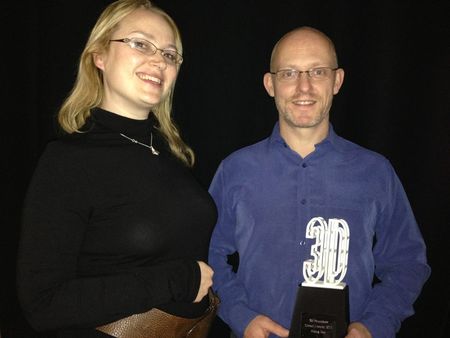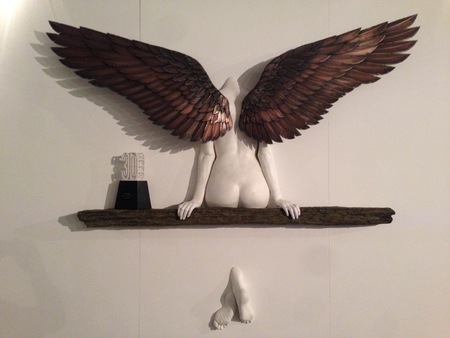Earlier this week our design of the week featured Icarus Had a Sister, by Masters & Munn. While we’re certain you’ll agree the work is astonishing, we also must tell the incredible story of how it came to be, as revealed during a long conversation at the close of the 2013 3D Printshow.
The work may have been recently completed, but in fact it germinated some nine years ago, while André Masters made a critical life transition.
You see, Masters was a traditional model-maker, one who made expert models with his bare hands, skill and plenty of workshop tools. But there was a problem. The model-making industry was, at the time, shifting to a computer-graphics mode, leaving traditional makers like Masters behind.
With much courage, determination and effort, Masters began to re-engineer his skills to make the digital shift. At that time the Icarus project was conceived – but not completed because the 3D technology of the day was simply insufficient to do the job – and far too expensive.
But he learned. He spent considerable time developing knowledge of the new 3D print space emerging in the mid-2000’s. Teaming up with the IPF print service provided valuable knowledge, connections and access to current 3D print tech (and eventually the final 3D prints), with which Masters & Munn began to experiment. They 3D printed test components for the Icarus project in different materials, different 3D printers with different processes. They tested uncountable numbers of prototype feathers in different conditions of heat, humidity and water, from “Feather 1” to “Feather of Ultimate Despair”. They learned exactly how to build the Icarus.
Masters says this transformational experience was difficult but afterwards the pair’s new skills felt like “waking up with new superpowers”, as they gained the freedom to do many more things using 3D print technology.
But this isn’t just a story about their analog-to-digital transformation. There’s a series of incredible coincidences that seem to provide portent that Icarus was somehow meant to happen. Consider the following:
- While working on Icarus, Masters would continually listen to a Hans Zimmer piece from the pyramid scene in the movie, “The Da Vinci Code”. Somehow, he says, it made him get the work done
- The Icarus project was not intended to be religious, yet somehow it conveys a very spiritual feeling
- The final appearance of the Icarus involves two opposing triangle shapes (wings and torso vs. crossed feet), in a manner very similar to the Da Vinci Code scene at the Louvre Pyramid
- They required additional funding to complete the work in time for the 3D Printshow in London, but were unsuccessful raising it via Arts grants. Instead, they quickly put together a last-minute Kickstarter campaign
- Munn had a dream the night before Kickstarter launch that the campaign would be funded – by a single backer
- The morning of the Kickstarter launch, it met its funding goals – with a single backer. A guardian angel, you might say, saved the project
- The Icarus sister appears to be ready to jump off the ledge to make its first flight, just as 3D printing technology is about to do. Positioned at the far end of the 3D Printshow gallery, it is as if that is 3D printing’s launch point
- That very location in the 3D print gallery is the same place Masters met his partner, Munn, eleven years ago
After the conversation concluded, we exited the show venue and proceeded to the London Tube station across the street.
Which station was it?
Angel.



